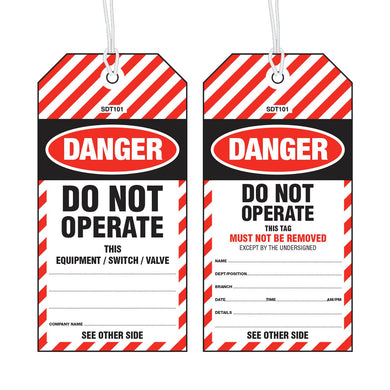Safety Signs: Enhancing Workplace Safety
In today’s dynamic work environments, prioritizing safety is paramount. Safety signs play a crucial role in ensuring workplace safety, effectively communicating hazards, regulations, and necessary precautions to employees and visitors. From construction sites to industrial facilities, safety signs serve as visual cues that reinforce safety protocols and prevent accidents.
Understanding the Importance of Safety Signs
Safety signs serve as vital components of any comprehensive safety program. By prominently displaying Safety signs in strategic locations, employers can effectively mitigate risks, reduce accidents, and promote a culture of safety awareness. These signs not only alert individuals to potential hazards but also provide essential guidance on how to navigate safely through various environments.
Types of Safety Signs
1. Regulatory Signs
Regulatory signs inform individuals about specific laws, regulations, or policies governing a particular area or activity. These signs typically feature bold lettering and standardized symbols, ensuring clear comprehension across diverse audiences.
2. Warning Signs
Warning signs are designed to alert individuals to potential hazards or dangerous conditions. These signs feature bold colors, attention-grabbing symbols, and concise messages to effectively convey the associated risks and encourage caution.
3. Prohibition Signs
Prohibition signs indicate actions or behaviors that are strictly prohibited within a given area. These signs feature universally recognized symbols accompanied by clear, concise messages, leaving no room for ambiguity regarding the prohibited activities.
4. Emergency Signs
Emergency signs provide critical information regarding emergency procedures, evacuation routes, and the location of emergency equipment. These signs are designed to facilitate swift and efficient responses during crisis situations, ensuring the safety of all individuals within the vicinity.
5. Informational Signs
Informational signs offer valuable guidance, instructions, or supplementary information related to a particular area or activity. These signs may include directions, operating instructions, or safety tips to enhance awareness and promote safe practices.
Best Practices for Implementing Safety Signs
Implementing safety signs effectively requires careful planning and consideration. Here are some best practices to ensure the optimal placement and visibility of Safety signs:
- Conduct a thorough risk assessment to identify potential hazards and determine the appropriate types of safety signs needed.
- Ensure that safety signs are visible from a distance and positioned in areas where they are easily noticed by individuals.
- Use clear, concise language and universally recognized symbols to maximize comprehension across diverse audiences.
- Regularly inspect and maintain safety signs to ensure visibility and legibility, replacing any signs that are damaged or faded.
- Provide training to employees on the meaning of various safety signs and the importance of adhering to safety protocols.
Benefits of Effective Safety Signage
Implementing effective safety signage offers numerous benefits, including:
- Accident Prevention: By alerting individuals to potential hazards and guiding them on safe practices, safety signs help prevent accidents and injuries.
- Regulatory Compliance: Compliance with safety signage regulations ensures that businesses meet legal requirements and avoid potential fines or penalties.
- Improved Safety Culture: Prominent display of safety signs reinforces the importance of safety in the workplace, fostering a culture of vigilance and accountability among employees.
- Enhanced Productivity: A safer work environment reduces the likelihood of disruptions caused by accidents or injuries, leading to increased productivity and efficiency.
FAQs (Frequently Asked Questions)
- What are the primary colors used in safety signs?
- Safety signs typically utilize the colors red, yellow, green, blue, and white to convey specific messages and indicate different types of information.
- How often should safety signs be inspected and maintained?
- Safety signs should be inspected regularly, at least once a month, to ensure that they remain visible, legible, and in good condition. Any signs that are damaged or faded should be promptly replaced.

- Safety signs should be inspected regularly, at least once a month, to ensure that they remain visible, legible, and in good condition. Any signs that are damaged or faded should be promptly replaced.
- Are safety signs mandatory in all workplaces?
- Yes, Safety signs are mandatory in workplaces where there are potential hazards or risks to the health and safety of employees or visitors. Employers are required by law to implement appropriate safety signage to mitigate risks and ensure compliance with safety regulations.
- Can safety signs be customized to suit specific needs?
- Yes, safety signs can be customized to address unique hazards or specific requirements in different environments. Customized signage allows businesses to effectively communicate relevant safety information tailored to their specific operations.
- What should I do if I encounter a damaged or missing safety sign?
- If you come across a damaged or missing safety sign, report it to your supervisor or the appropriate authority immediately. Avoid entering hazardous areas until the necessary signage is in place to ensure your safety and the safety of others.
- How can I improve the visibility of safety signs in low-light conditions?
- To enhance the visibility of Safety signs in low-light conditions, consider installing reflective or illuminated signs. These options ensure that safety signage remains clearly visible even in dimly lit environments, reducing the risk of accidents or mishaps.
Conclusion
Safety signs are indispensable tools for promoting workplace safety and mitigating risks across various industries. By implementing effective safety signage strategies, businesses can create safer work environments, protect their employees, and enhance overall productivity. Prioritizing safety not only fosters a culture of well-being but also contributes to long-term success and sustainability.

